Motorola
Motorola One Zoom: a smartphone that keeps its promises
Aprox. 606€ - see price -
See specificationsWith the One Zoom, Motorola puts everything it has learned from its previous models into use. What offer - for now - the best smartphone in the range, and perhaps even the brand.
Our review
Presentation
Continuing the momentum of its One range, started last March, Motorola offers a third model whose particularity is to focus on the zoom. To do this, the One Zoom offers 4 rear sensors, the most important of which remains the one with a telephoto lens with x3 zoom. In addition, this smartphone is the best in the range in terms of features and finishes. Perhaps a way to stand out from its colleagues in the look - let's say it - a little cheaper.
The Zoom model is also the most expensive Motorola One so far. Its price of € 449 places it directly in front of the Xiaomi Mi 9T Pro, the Oppo Reno, but also the Sony Xperia 10 Plus.
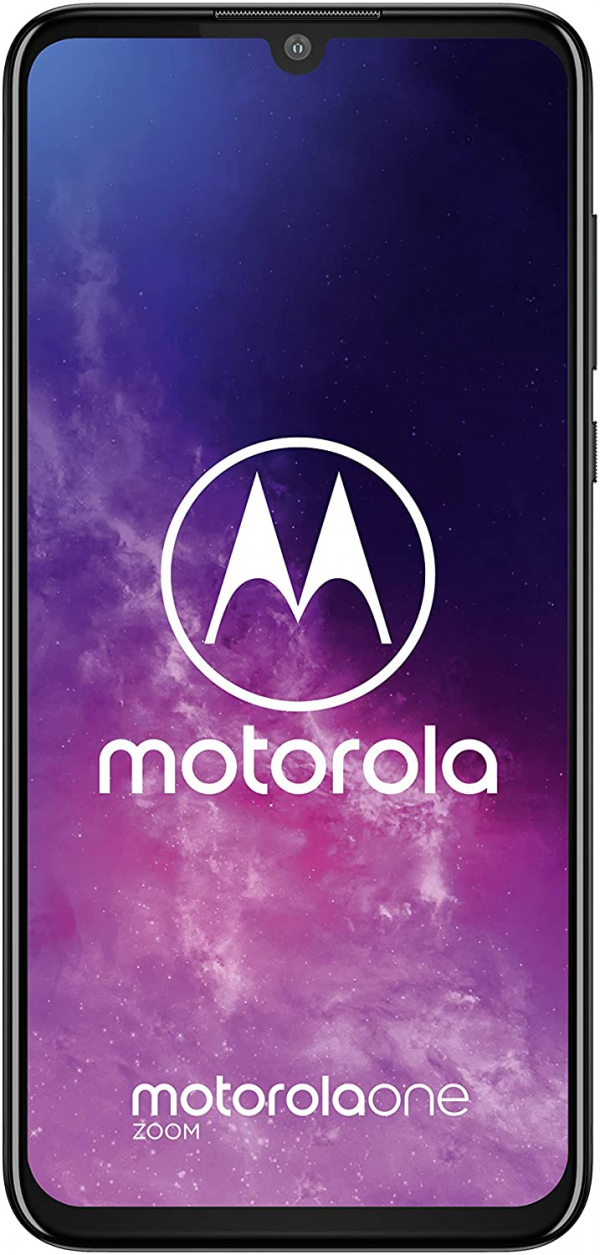
Ergonomics and design
With its One Zoom, Motorola offers its most aesthetically successful model. The finishes are well made, and the grip almost perfect - despite a glass back which turns out to be very slippery.
This rear part has a brushed glass design which gives it a metallic effect that is really pleasing to the eye. A rectangular island is placed on the upper part of the mobile. It houses 4 photo sensors as well as the brand logo which lights up when the phone screen is itself on. But rest assured, this does not really affect autonomy.
At the front, there is a 6.4-inch Oled screen in 19: 9 format and at the definition of 2,340 x 1,080 px. Not yet completely borderless, there is a notch in the shape of a drop of water. The slab thus occupies approximately 85% of the total area at the front. Under this Oled screen hides a little surprise: a fingerprint sensor. The latter works rather well and is, on the whole, fast enough to unlock the phone.
The phone chassis is made of polished aluminum. It accommodates on its right side the volume controls as well as the start button which is notched to differentiate. Above are a speaker and the slot that can hold 2 SIM cards or 1 SIM card + 1 microSD card. Finally, at the bottom is a 3.5 mm mini-jack, a microphone and a USB-C port
The 3.5mm mini jack on this One Zoom is almost excellent. It delivers a more than correct power, capable of accepting almost all helmets - only the most powerful will have a little trouble. Its distortion is zero and the dynamic range is broad overall. Finally, the stereo reproduction almost meets excellence.
With only one speaker available, the One Zoom will not be a good partner for listening to music, even extra. It's best to limit yourself to playing a few videos on YouTube, no more.
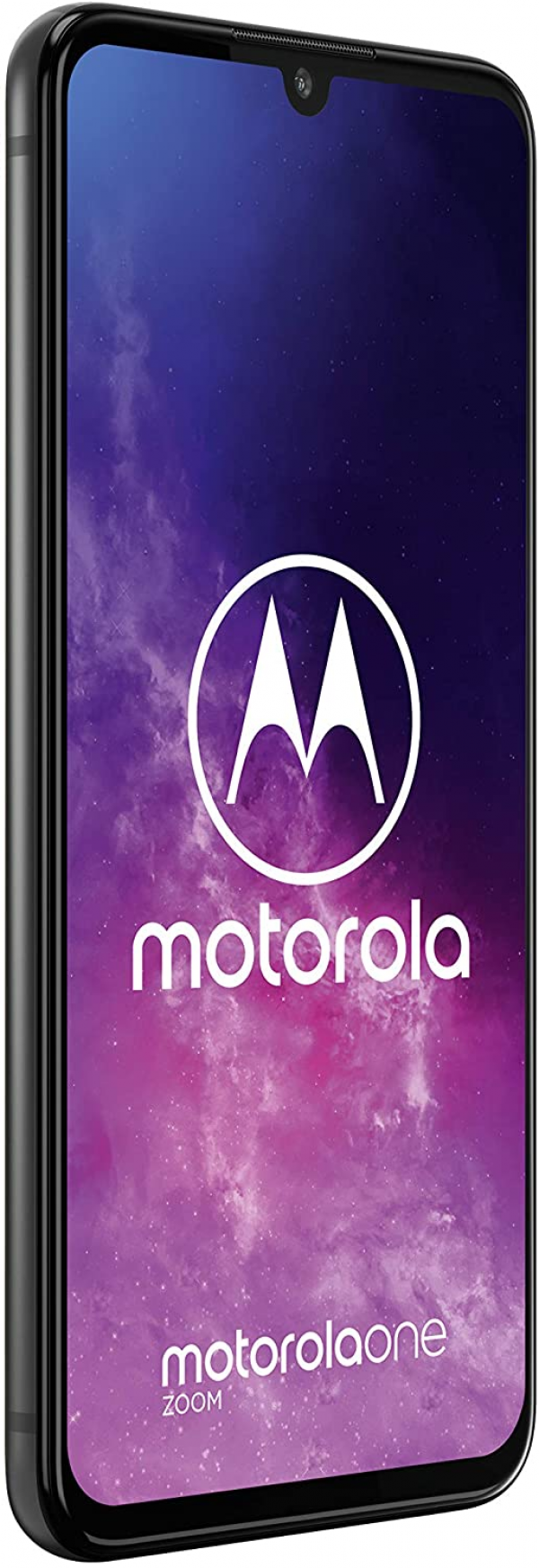
Screen
The Motorola One Zoom offers a 6.3-inch Oled panel with Full HD + definition (403 ppi). Overall, the screen of the One Zoom is quite good, it is even the best in the range so far.
But first of all, you must change the color settings in the settings of the smartphone. By default, the screen is not very well calibrated and we recommend choosing the contrasting mode to get the most out of your display. Once this change is made, we get a delta E of 2.9, which is very good. There is still a strong drop in primary colors which reach or even exceed a delta E of 6.
Regarding colorimetry, the phone reaches 7,854 K, a result far too far from the norm (6,500 K) to be considered good. Unfortunately, no other parameter can be modified to get a little closer. However, it makes up for the readability since it offers a maximum brightness of 473 cd / m² as well as a reflectance of 45%, enough to be quiet to read in the sun. At night, it is also good with a minimum brightness which capped at 4.4 cd / m².
Finally, as it is an Oled panel, the contrast is almost infinite and the afterglow time does not exist. The tactile delay is 73 ms.
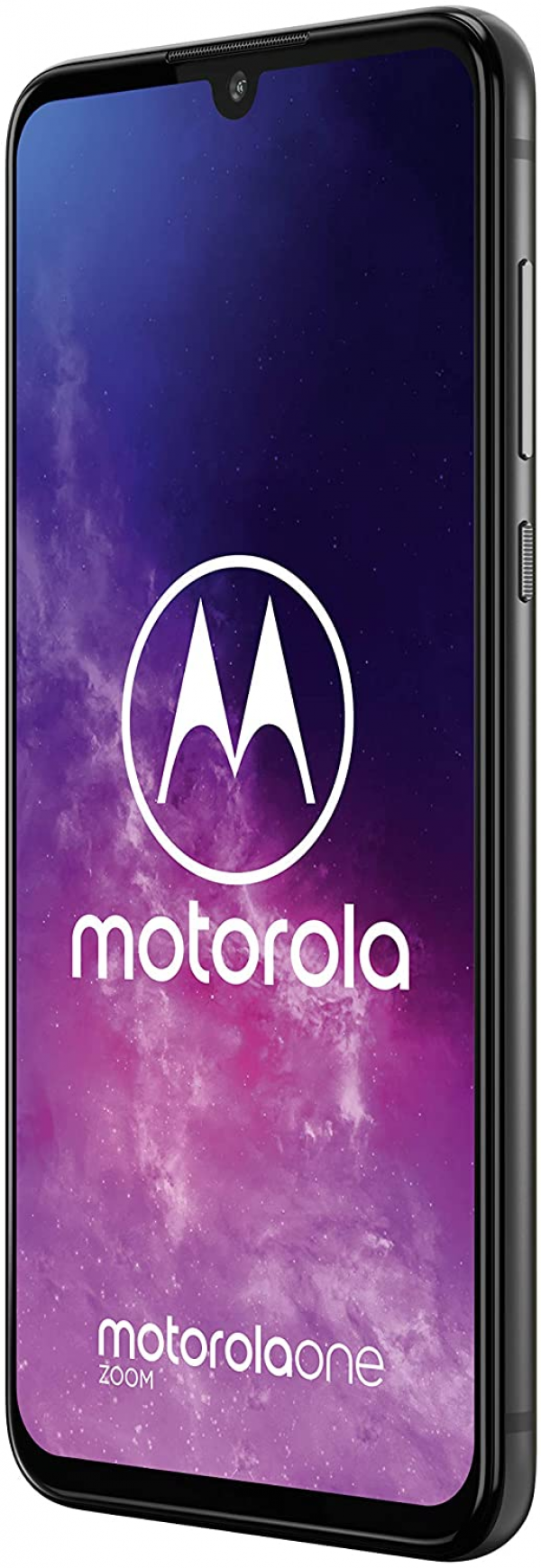
Performances
The One Zoom is a mid-range smartphone. The processor that accompanies it is just as much since it is the Snapdragon 675. Accompanied by 4 GB of RAM, the smartphone purrs and offers good performance, without really excelling either. Helped by the "clean" experience offered by Motorola's intrusive interface.
In terms of overall performance (75.11), it does not equal the Mi 9T Pro (87.3) which benefits from the most recent Snapdragon platform (the 855+). But it is not lagging behind since it supplants the Pixel 3a and is only a stone's throw from the OnePlus 7 Pro.
In game, its Snapdragon 675 processor is supported by an Adreno 612. The performances delivered are correct since it obtains a score of 56.98 - not really very far from the OnePlus 7 Pro (59.8). In use, this will allow you to play all of the games in the Playstore. Perhaps not in the most fluid way possible, it is true.
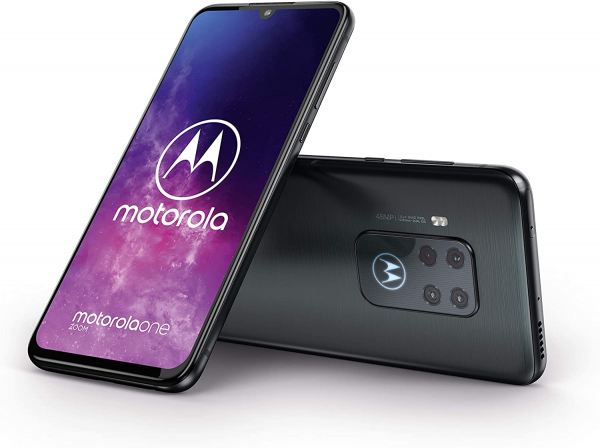
Photo
The One Zoom is Motorola's best-equipped photo-level smartphone. It has 4 sensors on the back, the main one of which is 48 MP. It is accompanied by an ultra wide-angle sensor of 16 Mpx (viewing angle of 117 °), a telephoto x3 of 8 Mpx and a depth sensor of 5 Mpx.
By day, the Motorola 48 MP sensor does not compete with that of Xiaomi. The software completely overwrites the scene details and noise appears on the black background. However, the exposure is under control, which allows the One Zoom to display true colors.
At night, the observation is a bit different. The details are still less compared to the Mi 9T Pro, but the exposure is a little better controlled, especially at the lower left corner. For the rest, the Xiaomi smartphone is clearly superior, either in the details or in its increase in sensitivity (ISO 4,745 against ISO 7,256).
To learn more about the capabilities of this x3 telephoto module, you can consult our lab paper which details it in the face of slightly more upscale competitors.
The Motorola One Zoom enters our labs. The third model in the One range is also the most interesting on paper since it hosts ...
The Motorola One Zoom has an optical zoom x3, against x2 on the Mi 9T Pro. If he once again overwrites the details, he is doing better than the Chinese, which considerably strengthens the contrast and brings out the unsightly contours of the image. Color rendering is generally better managed on the Motorola mobile.
At night, it's a whole different story. If neither of the two photos is usable, the one offered by the One Zoom is nothing but noise. That of the Mi 9T Pro smooths all the details. In both cases, we will avoid using the sensor in the dark. Too bad, since this optical zoom x3 is what makes the strength of the Motorola smartphone - which also derives its name.
The phone catches up with its ultra wide-angle module. Software processing does not smooth out as much as we are used to seeing on smartphones in this price range. The colors are respected and, above all, there is a very weak presence of this luminous brightness which one can find on the right edge of the picture taken by the Mi 9T Pro.
In the dark, it is not as bright, but it remains more "usable" than with the Xiaomi smartphone. Overall, the image remains more readable, even if the smoothing inflicted by software processing remains powerful. The exposure is quite correct.
The night mode of the Motorola One Zoom overexposes the scene too much for the latter to remain usable, in any case compared to taking a classic night photo. It shows more details, but this is at the expense of colors.
At the front, this Motorola One Zoom offers a 25 MP sensor. The overall result is satisfactory on the whole, the device succeeding in offering a faithful rendering of the faces. Unfortunately, this only applies to the foreground since the phone shows its limits if there is something in the background. However, note that the One Zoom manages the brightness pretty well.
As for portrait mode, it is really good. The clipping is excellent, and the software distinguishes between the object in the foreground and that in the background. As on many smartphones today, there are different types of bokeh effects (called "lights" which allow you to pretend you are in the photo studio or to get a black and white background and a color subject.
In terms of video, the phone can film up to 4K at 30 fps at the back and up to Full HD with the front sensor. The main sensor is equipped with an optical stabilizer (OIS) which will prevent hand shakes in the image.
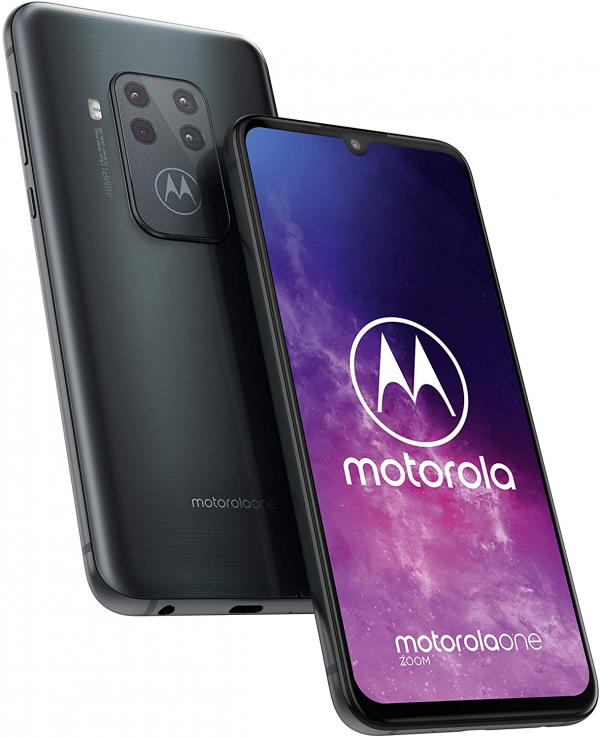
Autonomy
With a 4,000 mAh battery, Motorola's promise for the One Zoom is 2 days of battery life. According to our SmartViser test, the phone lasted 20 h 35 min, which, in daily equivalence, gives an autonomy of more than 2 days. The promise is therefore respected even if it is necessary to delay and count a little less with a little more sustained use of the smartphone.
For recharging, it will take approximately 1 h 45 min. The phone is compatible with 15 W fast charging - dubbed "TurboPower" by Motorola.
Conclusion
The One. If only one was needed, it would surely be this one. With this One Zoom, Motorola manages to offer a very good mid-range smartphone, good everywhere and bad nowhere. The photo quality is up to our expectations and promises made - even if, at night, it will have to be forgotten - its design is the most attractive of the range and its autonomy is more than convincing. In short, Motorola is holding a very good smartphone there but which does not make the weight in the face of competition from the Xiaomi Mi 9T Pro.
Specifications

